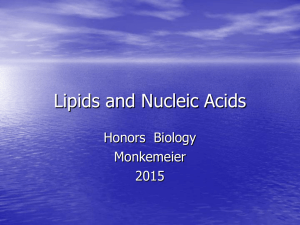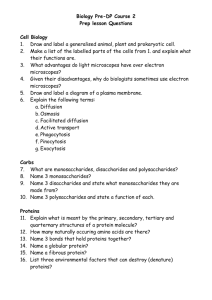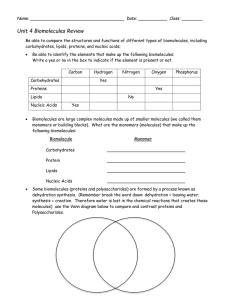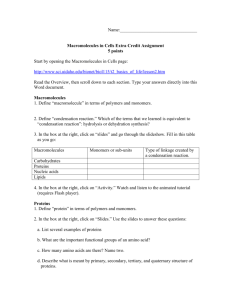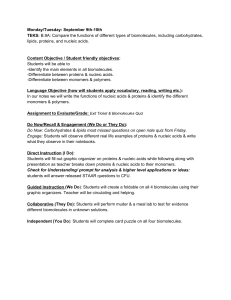Molecules
advertisement
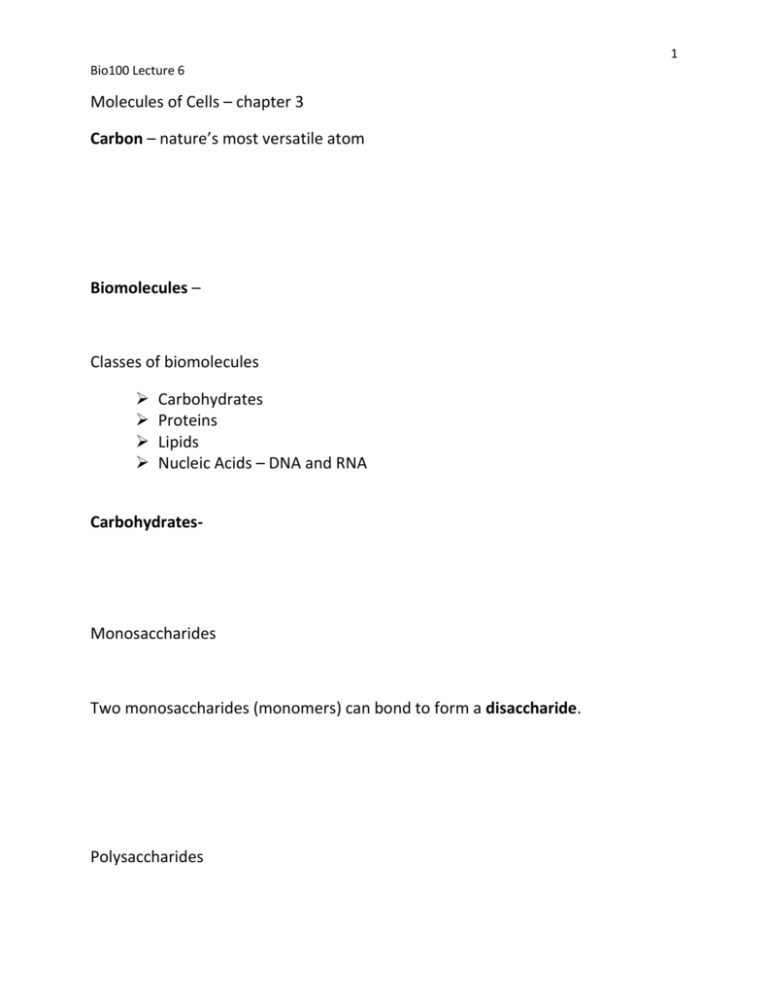
1 Bio100 Lecture 6 Molecules of Cells – chapter 3 Carbon – nature’s most versatile atom Biomolecules – Classes of biomolecules Carbohydrates Proteins Lipids Nucleic Acids – DNA and RNA Carbohydrates- Monosaccharides Two monosaccharides (monomers) can bond to form a disaccharide. Polysaccharides 2 Bio100 Lecture 6 Starch Glycogen Carbohydrate functions: Proteins Amino Acids – the building blocks (monomers) of proteins A protein can have four levels of structure: o primary structuresecondary structure (folding)- tertiary structure (overall shape) quaternary structure (two or more joining together) Protein functions: Enzymes – Structure 3 Bio100 Lecture 6 Defense Transport Messengers Lipids Types of lipids: • fats, • phospholipids, and • steroids. Fats: Steroids Phospholipids Nucleic Acids Functions • Blueprint for making proteins through genes • DNA • RNA Nucleic Acids code for Amino Acids 4 Bio100 Lecture 6 Nucleotides have three parts: DNA nitrogenous bases are 1. 2. 3. 4. 5. 6. 7. 8. What are the 4 Biomolecules? What is the basic carbohydrate used in our body? What is a protein? What are the two secondary structures of a protein? Name the 3 types of lipids. What type of lipid is used to make cell membranes? Name two nucleic acids. What are the 4 nitrogenous bases of DNA?

